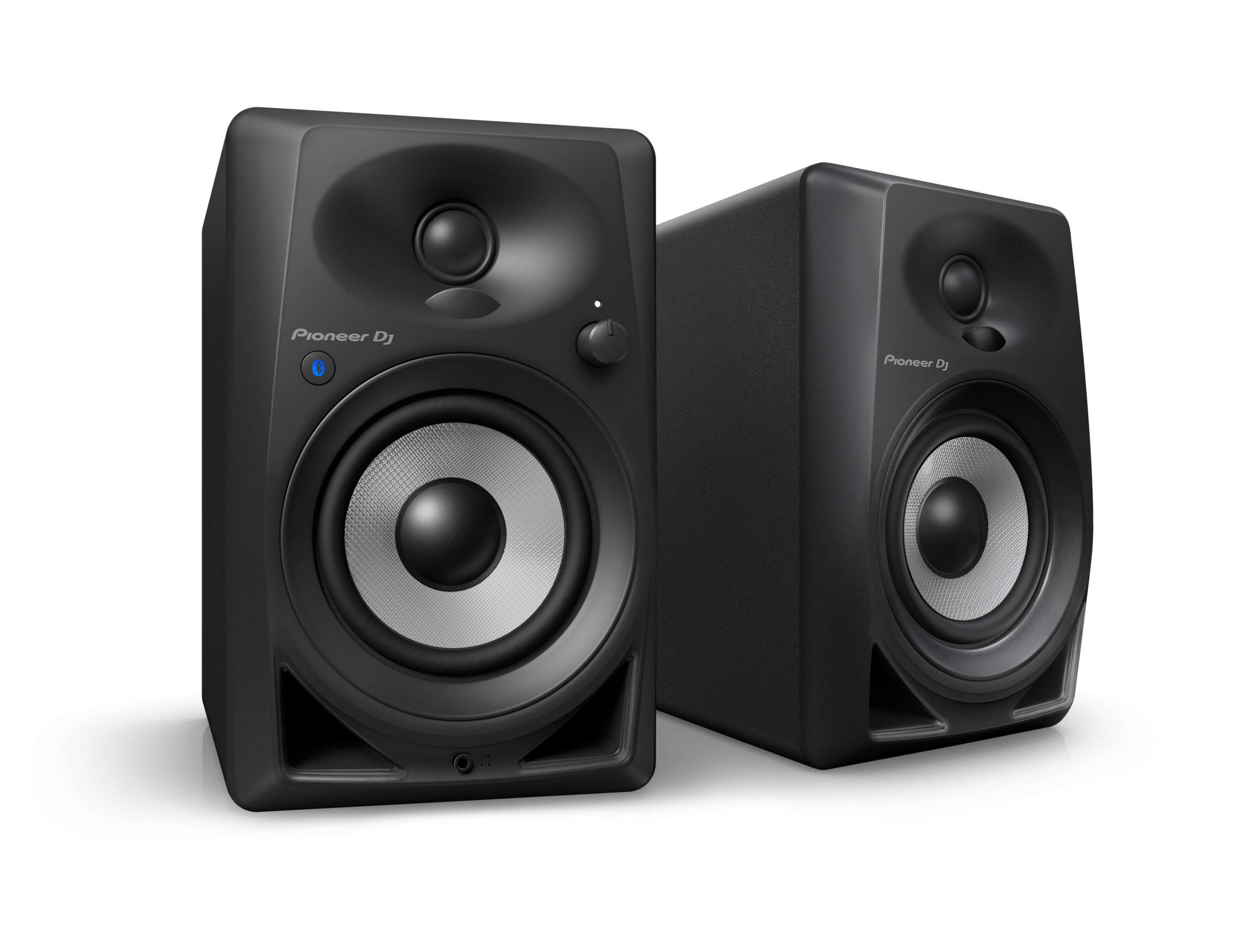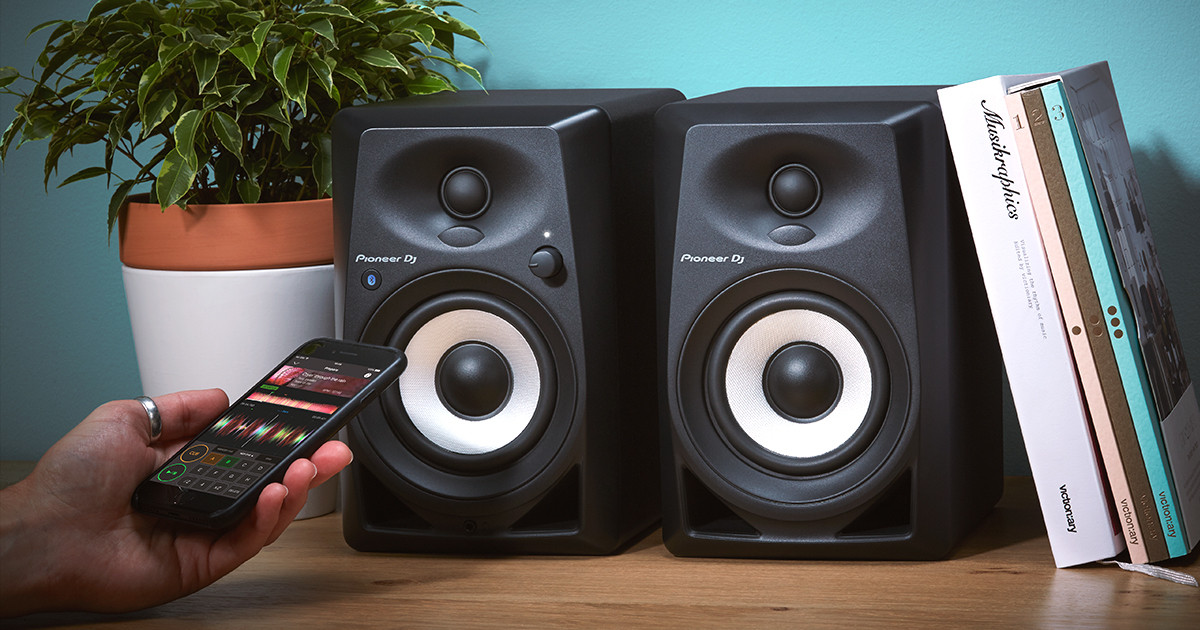For any aspiring DJ, having a reliable set of speakers is essential to truly experience and refine their sound. The Pioneer DM-40 series emerges as a compact bookshelf speaker system designed to be versatile beyond just DJing. Offering a range of input options and Bluetooth connectivity on certain models, the DM-40 aims to be the go-to speaker for those working within limited spaces and budgets. In this review, we delve into the features of the Pioneer DM-40 to determine if they live up to the hype.
Build Quality
The Pioneer DM-40 speakers are constructed with a four-inch fibreglass bass woofer and a 3/4 inch soft dome tweeter. The speaker cabinet boasts smoothly rounded edges and an elegantly designed front panel that integrates the bass reflex ports and diffusers. Despite their small size, these speakers feel remarkably robust and well-assembled. The standard DM-40 models feature black bass drivers, while the Bluetooth variants sport silver drivers, a purely cosmetic difference that does not impact the sound performance.
The front panel design is subtly sophisticated, featuring a crescent-shaped diffuser just below the tweeter. This diffuser isn’t just for aesthetics; it plays a crucial role in dispersing high frequencies more effectively around the bass driver. This design choice results in a more balanced sound distribution across a wider listening area, reducing the critical need to be positioned directly in front of the speakers for optimal sound.
 Angled view of Pioneer DM-40BT bookshelf speakers showcasing their compact design, ideal for small DJ setups.
Angled view of Pioneer DM-40BT bookshelf speakers showcasing their compact design, ideal for small DJ setups.
The front-mounted bass reflex ports are strategically placed to enhance the bass driver’s ability to reach lower frequencies and move air more efficiently. While bass ports are common in speaker design, their front placement on the Pioneer DM-40 is particularly advantageous. Speakers with rear ports often suffer performance issues when placed close to walls. Pioneer DJ’s decision to position two ports at the front makes the DM-40 exceptionally well-suited for placement against walls or within confined spaces.
One point of caution regarding the build is the delicate soft dome tweeter, which is exposed without a protective grill. Users should exercise care when handling and relocating the DM-40 speakers to prevent accidental dents that could negatively affect both the appearance and acoustic performance.
DM-40 Sound Quality
Considering their compact size, the Pioneer DM-40 speakers deliver an impressive sound that is surprisingly powerful. They punch well above their weight in terms of audio output. The integrated convex diffusers utilize DECO technology, derived from Pioneer’s high-end audio brand, TAD. As previously mentioned, this diffuser technology is instrumental in widening the dispersion of high frequencies. This ensures a broad and even soundstage throughout the room, meaning listeners don’t need to be in a precise sweet spot to enjoy the best sound quality.
When compared to similarly sized speakers, the warmth of the bass frequencies is particularly noticeable in the Pioneer DM-40. With a clear emphasis on the lower end, it’s evident that these speakers are engineered with DJs in mind. The bass is deep and impactful, producing a warm sonic profile that easily fills a bedroom or home office. Given their bass-forward equalization, the DM-40 speakers are particularly well-suited for DJ practice and enjoying electronic music, although they might not be the optimal choice for critical music production tasks requiring a flatter frequency response.
Powering the speakers is a Class AB amplifier located within the left speaker unit, driving both speakers at 21 watts each. The left speaker houses the amplifier, along with all control knobs and input/output connections. The right speaker connects via standard speaker wire and offers no other functionality. A notable limitation is the fixed left/right speaker configuration, dictated by the placement of the amplifier and power connections. This restricts placement flexibility to some extent, a feature that some competing models in this price range address with a simple channel toggle switch.
Connectivity
The Pioneer DM-40 speakers offer a practical range of connectivity options, including both unbalanced RCA inputs and a 1/8th inch TRRS (Aux) input. An RCA to Aux cable is included, allowing for straightforward connection to a variety of audio sources such as computers, smartphones, tablets, and DJ equipment. The versatility of the included cable is enhanced by the presence of both RCA and Aux connections on the speaker itself. For instance, users can connect the headphone jack to a computer or a DDJ-200 controller, using the RCA connectors at the speaker end. Conversely, the same cable can connect to the master output of controllers like the DDJ-400, with the headphone jack plugged into the speaker.
 Rear panel connections of Pioneer DM-40BT speakers highlighting RCA, AUX inputs and speaker terminals for versatile connectivity options.
Rear panel connections of Pioneer DM-40BT speakers highlighting RCA, AUX inputs and speaker terminals for versatile connectivity options.
While the connectivity suite is well-suited for entry-level and mid-range equipment, the Pioneer DM-40 does not include balanced audio connections. However, this omission is unlikely to concern the majority of the DM-40’s intended user base, as balanced connections are typically required only in more professional audio setups.
Lastly, a headphone output (1/8th inch TRRS) is conveniently located on the front of the left speaker. Plugging in headphones automatically mutes the loudspeaker output, making it ideal for late-night practice sessions or private listening without needing to disconnect the speakers from the audio source.
Bluetooth Model (DM-40BT)
The DM-40BT variant enhances connectivity further by incorporating an internal Bluetooth receiver for wireless audio streaming. This model supports a variety of audio codecs including SBC, AAC, Qualcomm® aptX™, and Qualcomm® aptX™ Low Latency, providing flexibility for different streaming devices and audio quality preferences. It is important to note, however, that Bluetooth technology is still not recommended for live DJ performance due to inherent latency issues. The delay introduced by Bluetooth makes beatmatching by ear virtually impossible.
 Pioneer DM-40BT speakers in a lifestyle setting, demonstrating their Bluetooth wireless connectivity for convenient music streaming.
Pioneer DM-40BT speakers in a lifestyle setting, demonstrating their Bluetooth wireless connectivity for convenient music streaming.
The Bluetooth functionality in the DM-40BT is primarily intended for casual listening, adding to the speaker’s everyday usability. The inclusion of Bluetooth broadens the appeal of the DM-40, making it a more versatile option for general home audio use. While Bluetooth streaming is convenient for everyday use with smartphones and laptops, direct analogue connections offer a slightly superior sound quality for critical listening or DJ practice.
It’s also worth noting that the Bluetooth module in the DM-40BT operates simultaneously with any physical audio inputs. There is no option to disable Bluetooth, which means any device previously paired can potentially interrupt a DJ set by initiating playback over the Bluetooth connection.
Our Thoughts
The Pioneer DM-40 stands out as an excellent compact speaker system, particularly well-suited for bedroom DJs and small studio setups. Their small footprint, front-firing bass ports, and commendable sound quality make them an ideal choice for placement on desks, shelves, or within bookshelves. Priced competitively, the standard DM-40 offers significant value and performance for its cost, explaining its widespread popularity. However, the additional cost for the Bluetooth-equipped DM-40BT model is relatively steep compared to similar Bluetooth upgrades offered by competitors.
While speakers of this size may not be adequate for large house parties or venues, for bedroom DJs, home studios, and anyone looking to upgrade from basic laptop speakers, the Pioneer DM-40 speakers are a fantastic option. The BT version further enhances their appeal by adding convenient wireless playback capabilities for everyday listening.

